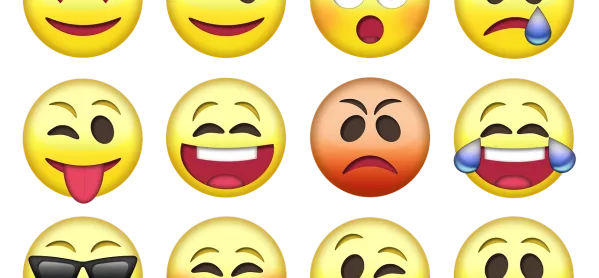“At my secondary school, emojis are embedded in all of our schemes of work…Everyone in the English department is using them,” reveals Charlotte Hodgson, an English teacher at Avonbourne College in Bournemouth.
“I’ve had classes plot the entire summary of a scene in emojis and then they put them on to a graph to show the tension the characters are feeling, and they find quotations to illustrate this, so it builds to become higher-level learning as well.”
But at St Matthias School in East London, headteacher Clare Sealy has a very different view: “As educators, we have not a single minute to waste teaching trivia such as emojis,” she says. “How will such learning help bridge the word gap? How can we help disadvantaged children gain the sorts of powerful knowledge that children in, say, the top public schools have? Not by devoting precious curriculum time to the detritus of youth sub-culture. That would be fiddling while Rome burns.”
It’s been almost 20 years since the emoji symbols were invented by Shigetaka Kurita in Japan, and it is indisputable that they are now deeply embedded in our culture. According to data from Facebook, they are used more than 60 million times a day and as of June 2017, there are 2,666 emojis in the Unicode Standard worldwide computer character coding system.
In 2015, the Oxford English Dictionary (OED) named the emoji “face with tears of joy” as “word of the year”, while Hollywood has even made a movie about the symbols (The Emoji Movie, 2017).
They are arguably more recognisable to the general population than the leading sports, music or film stars, and they cross cultures, age ranges, and personal interests.
Does all that mean they can be useful to educators?
Yes, says linguistics professor and author of The Emoji Code, Vyvyan Evans:
“There is a range of ways in which things like emojis can be used in the curriculum...not necessarily in terms of the necessities - spelling, punctuation and grammar - but in terms of actual content,” he says.
“For example, for feedback, some schools use emoji charts to signal how well students are doing. Although that was received dimly, there are ways in which ideas can be conveyed more effectively with emojis.
“There was an abridged version of an ‘emojified’ Shakespeare text that caused absolute horror for some, but in terms of helping understanding of content that can be slightly inaccessible at times, I think there’s a role for emojis.”
Anthony Radice, assistant headteacher at Great Yarmouth Charter Academy, disagrees.
“My role is to introduce my students to things they’re not already familiar with, and Year 7s are not very familiar with great works of literature. Actually, they’re very familiar with things like emojis, so isn’t it a waste of class time to be giving them what they’ve already got?”
To read this article in full, pick up a copy of the 18 May issue of Tes from your local newsagent or subscribe to read online.




